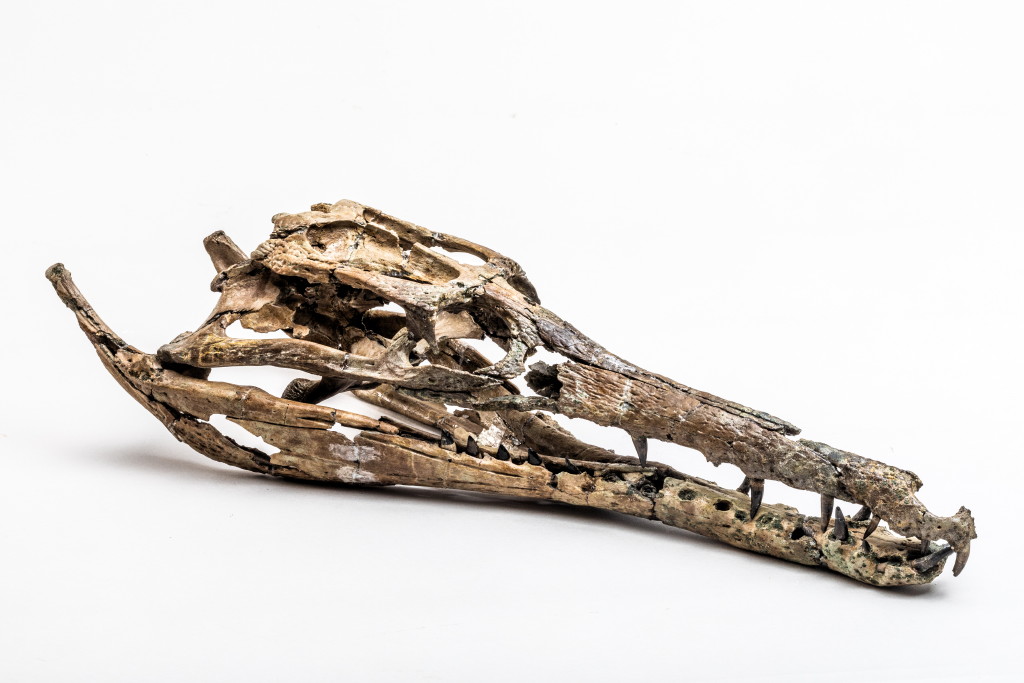Hyposaurus skull, Inversand Quarry, Sewell, NJ, Paleocene.
The New Jersey State Museum, 205 W. State St., Trenton, announces the opening of “Jersey Crocs Rule!” on March 2. The exhibition, in the East Gallery on the museum’s first floor, will allow visitors to explore the existence of crocodiles in New Jersey throughout their evolution.
The diversity of crocodile species found in the Garden State’s fossil record is often a source of amazement to those who think of these creatures as surviving only in tropical and subtropical climates, according to a press release.
The exhibition will feature taxidermy mounts and skeletons of crocodiles of prehistoric and living species. Visitors will see the 6-foot-long cast of the skull of New Jersey native Deinosuchus, one of the world’s largest known crocodiles.
“Jersey Crocs Rule!,” supported in part by the New Jersey State Museum Foundation, will be on view through Sept. 8.
Crocodylians have been on the Earth for more than 200 million years. Much of their evolutionary history is documented in the fossils and rocks found in New Jersey, according to the press release.
Crocodiles, alligators and gharials from the museum’s collections illustrate the modern form, while the exhibit also delves into the fossil history of crocs in New Jersey, beginning with preserved croc-like trackways dating back almost 200 million years.
One remarkable fossil feature of the exhibit will be a nearly complete skeleton of crocodylian Hyposaurus rogersii, which lived in what is now Gloucester County about 65 million years ago, according to the press release.
Visitors will also come face-to-face with a skull reconstruction of Deinosuchus, one of the largest crocodiles to ever live.
Other features of the exhibit will include interactives demonstrating how croc tails move and what their prehistoric environments were like, specimens of at least five different types of crocodylians that once lived in New Jersey, and a display of a recent croc fossil discovery currently under preparation at the museum.
Natural history curator David Parris said, “Most people are surprised to discover crocodiles existed in this area. There have been some important croc fossil finds here, including the Hyposaurus rogersii discovery.
“New Jersey is known to scientists from around the world as a rich source for specimens and information on crocodiles. However, the public doesn’t necessarily know this history. We hope this exhibition changes that perception,” Parris said.
The New Jersey State Museum is open from 9 a.m. to 4:45 p.m., Tuesday through Sunday, closed all state holidays. General admission is free; donations to the New Jersey State Museum Foundation, which supports the museum, are accepted. For additional information, visit www.statemuseum.nj.gov

